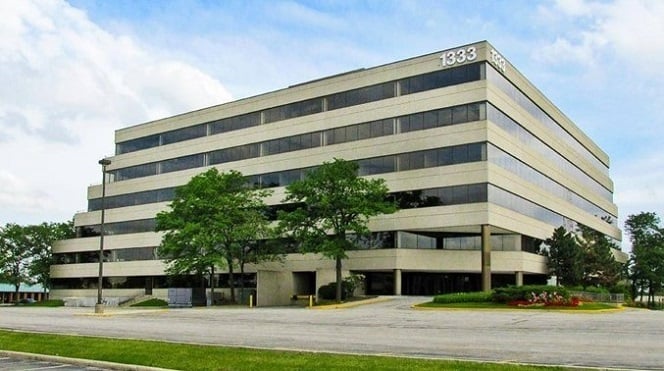CHICAGO—In June 2012, Mayor Rahm Emanuel unveiled his Retrofit Chicago's Commercial Buildings Initiative, a voluntary effort by tenants, managers and owners of major commercial buildings to reduce energy use by 20% within the next 5 years. Fifteen months later, some of the participants have begun to report results and draw lessons they hope will make Chicago the most sustainable city in the country.
“The long-term goal of this is to make Chicago number one,” Luke Leung said at this week's BUILDINGChicago and Greening the Heartland Conference. Leung is an architect with Skidmore, Owings & Merrill, LLP, located in the Railway Exchange Building at 224 S. Michigan, an 18-story class A office tower that is part of the initiative.
When the effort began, SOM and other architectural firms in 224 decided to take the lead and start examining how tenants in the building used energy and how they could work together to cut down use. A large proportion of the historic building, best known for its giant atrium, was occupied by architects like Leung, and they felt this deep level of expertise gave them a leg up in the initiative, which at first included a total of 14 buildings, aged 7 to 117 years old, with 14-million-square-feet. Eighteen more buildings joined this March, said Leung.
The architects quickly realized that their offices had a lot of “low-hanging fruit.”
“It looked like a trading floor with all these computers all over the place,” said Lucas Tryggestad, also an architect with SOM. Architects and structural engineers typically require multiple machines to run complex models while continuing with other work, he explained.
Tryggestad, Leung and other SOM architects began to take part in biweekly meetings with other architects in the building, including those from VOA Associates and Goettsch Partners. The firms also started putting together workshops where they analyzed energy use in IT departments, printing offices, and other sections, and reaching out to other tenants. Hamilton Partners, the building manager, also installed smart meters on building systems and mechanical equipment.
Until she started taking part in this effort, Susan Heinking from VOA Associates said she did not understand “how behavior plays a huge role. I was going around like my mother” reminding everyone she could to turn off the lights for rooms not in use. Heinking discovered that simple signs hung in strategic areas worked better. And software that automatically shut down computers after a certain time resulted in a 16% savings.
“A computer on full brightness was blasting 114 degrees at you,” she said, creating a “vicious circle” as employees then need more cooling. They cut their machines' brightness “and we saw a 2% savings just from that.” Other techniques they want others to adopt include letting non-tech employees use low-energy laptops, outsourcing server needs to centralized data centers, LEDs and putting printers on sleep mode. “I don't think it's rocket science.”
Tryggestad said that SOM had already seen an 18% reduction and believes they can surpass the 20% goal this year. Furthermore, he told conference goers, “hopefully you will tell this story to all the other buildings out there.”
© 2025 ALM Global, LLC, All Rights Reserved. Request academic re-use from www.copyright.com. All other uses, submit a request to [email protected]. For more information visit Asset & Logo Licensing.





